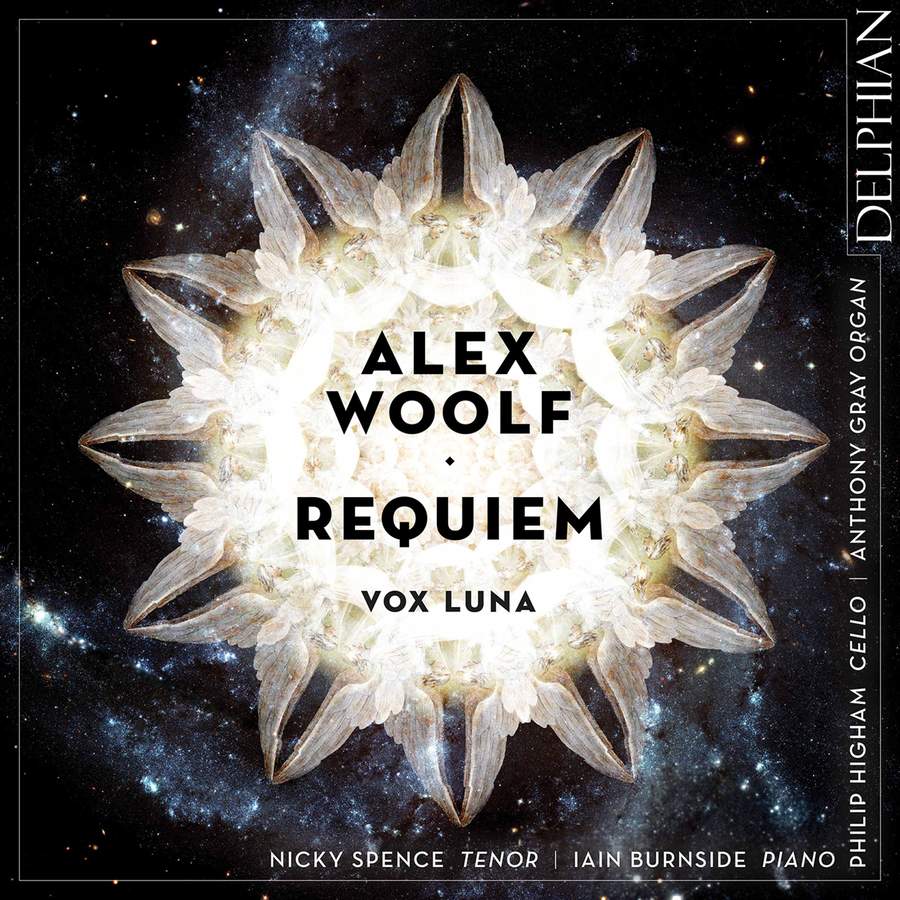WOOLF Requiem (Vox Luna)
View record and artist detailsRecord and Artist Details
Genre:
Vocal
Label: Delphian
Magazine Review Date: 01/2021
Media Format: CD or Download
Media Runtime: 55
Mastering:
DDD
Catalogue Number: DCD34240

Tracks:
| Composition | Artist Credit |
|---|---|
| Requiem |
Alex Woolf, Composer
Anthony Gray, Organ Iain Burnside, Piano Nicky Spence, Tenor Philip Higham, Cello Vox Luna |
Author: Pwyll ap Siôn
Most composers don’t get round to writing a Requiem until they’ve reached middle age at the very least, so it seems strange – almost perverse, one might say – to be reviewing one written by a composer still in his mid-twenties.
Alex Woolf is not your usual composer, however. Born in 1995, he studied at St John’s College, Cambridge, and the Royal Academy of Music, picking up awards, prizes and commissions along the way. Although he has several instrumental works already under his belt (including a symphony and a string quartet), choral music nevertheless remains at the core of his creative output.
Woolf’s Requiem is not your usual setting either. Written for solo cello, solo tenor, choir, organ and piano (the latter two often alternating with one another), Woolf intersperses movements from the original Latin text with settings of poetry by Gillian Clarke. The Clarke settings, for solo tenor, cello and piano, are spread out across the work’s 10 movements, forming a kind of song-cycle within the Requiem’s larger frame. They give the work a sharper, more contemporary focus. The first, ‘The Fall’, is a sobering rendition of the poem’s retelling of victims falling from the towers of the World Trade Centre following the 9/11 attacks, its witness-style account rendered with vivid dramatisation by tenor Nicky Spence.
Woolf’s fascination with the Requiem stems from having sung Mozart’s unfinished work when he was around 10 years old. The experience made him realise how effective words and music could be when combined in this way. They certainly form a powerful symbiosis here. Woolf’s command of choral forces is always imaginative and there are often quite masterful touches. He shifts effortlessly between the strident rhythmic articulation of the Kyrie to more rich, golden hues in Pie Jesu, with In Paradisum providing transcendent acquiescence. Subtle allusions are heard throughout, including echoes of Allegri’s Miserere in the ‘qui venit in nomine’ setting of the Sanctus, Pärt-like writing in ‘The Year’s Midnight’ and Nico Muhly-esque sounds in the middle section of Pie Jesu.
It’s perhaps significant, however, that the musical glue that actually binds the whole work is not the voice but Philip Higham’s soaring cello. These cello soliloquies bookend several movements. The instrument’s low, resonant timbre sets the scene in the Introit, too, as well as more or less signing off the work. That Woolf should turn to an instrument that most eloquently resonates with the human voice is perhaps the main clue to the Requiem’s undoubted accomplishment.
Discover the world's largest classical music catalogue with Presto Music.

Gramophone Digital Club
- Digital Edition
- Digital Archive
- Reviews Database
- Full website access
From £8.75 / month
Subscribe
Gramophone Full Club
- Print Edition
- Digital Edition
- Digital Archive
- Reviews Database
- Full website access
From £11.00 / month
Subscribe
If you are a library, university or other organisation that would be interested in an institutional subscription to Gramophone please click here for further information.




